
Stories

Announcing The 2025 Rita Allen Foundation Scholars
Major grants will support seven pioneering early-career biomedical scientists
The Rita Allen Foundation has named its 2025 class of Rita Allen Foundation Scholars, celebrating seven early-career leaders in the biomedical sciences whose research holds exceptional promise for revealing new pathways to advance human health.
The selected Scholars will receive grants of up to $110,000 annually for up to five years to conduct innovative research in neuroscience, cancer, immunology, and pain. The topics they will pursue include: the impact of transposable genetic elements on disease; mechanisms of non-genetic inheritance; using “molecular movies” to learn about protein production and how it can break down in disease; exploring stubborn problems of immunology using a comparative evolutionary analysis; ways to eliminate protein targets to develop new pain therapies; how maternal immunity is transferred through milk; and how pain information is processed in the spinal cord.
“We are honored to welcome this remarkable group of scientists to the Rita Allen Foundation Scholars community at a time when scientific research faces unprecedented challenges. For nearly five decades, our Foundation has supported bold visionaries tackling fundamental questions in biomedical science, from treating cancer and neurological diseases to understanding persistent pain,” said Elizabeth Good Christopherson, President and Chief Executive Officer of the Rita Allen Foundation. “As the research landscape continues to evolve with new complexities, these scholars represent exceptional talent and determination to pursue groundbreaking work that will ultimately improve human health. Their commitment to exploring the unknown gives us great hope for the future of medicine and the millions of lives their discoveries may touch.”
Since 1976, the Rita Allen Foundation has invested in more than 200 biomedical scientists at the early stages of their careers, enabling them to pursue research with above-average risk and promise. Scholars have gone on to make fundamental contributions to their fields of study and have won recognition including the Nobel Prize in Physiology or Medicine, the National Medal of Science, the Wolf Prize in Medicine, the Lasker-Koshland Special Achievement Award in Medical Science, and the Breakthrough Prize in Life Sciences.
Five of the 2025 Scholars were nominated by research institutions across the United States for their promising work in the fields of neuroscience, cancer, and immunology, and were selected by the Rita Allen Foundation’s Scientific Advisory Committee of leading scientists and clinicians.
The two investigators selected to receive the Rita Allen Foundation Scholars Award in Pain were chosen by a review committee of the U.S. Association for the Study of Pain (USASP), including previous Rita Allen Pain Scholars and other leaders in the field. Offered in partnership with USASP, the Rita Allen Foundation Scholars Award in Pain supports investigators whose research on the biology of pain holds exceptional promise for revealing new pathways to understand and treat pain conditions.
The seven pioneering early-career researchers selected as 2025 Rita Allen Foundation Scholars are:
Martin Taylor, Brown University; Milton E. Cassel Scholar
Alexander Chamessian, Washington University School of Medicine in St. Louis; Award in Pain
Allan-Hermann Pool, University of Texas Southwestern Medical Center; Award in Pain
Alex Johnson, Brandeis University
Christopher Lapointe, Fred Hutchinson Cancer Center
Deepshika Ramanan, Salk Institute for Biological Studies
Lamia Wahba, The Rockefeller University
Below, these newest Rita Allen Foundation Scholars offer a window into their current research, as well as reflections on their pathways to discovery science:

Martin Taylor, Brown University
Assistant Professor, Pathology and Laboratory Medicine
Milton E. Cassel Scholar
B.S.E., Princeton University
M.D., Ph.D., Johns Hopkins University School of Medicine
Martin Taylor has been designated the Milton E. Cassel Scholar for the 2025 class of Rita Allen Foundation Scholars. This special award honors the memory of a longtime President of the Rita Allen Foundation who passed away in 2004.
Genes make up only 2 percent of the human genome. In contrast, half the genome is around two million copies of the same few transposon sequences, which for years were relegated as “junk DNA.” Transposons are virus-like, self-copying DNA parasites. In humans, there is one class of active transposon, called LINE-1. Among hundreds of thousands of inactive copies and fragments, humans inherit 150–200 active copies of LINE-1, which are repressed in healthy tissues by multiple redundant mechanisms. In cancer, autoimmunity, and diseases of aging such as Alzheimer’s, LINE-1 escapes repression and contributes to disease pathology by mutating the genome and causing inflammation. The goals of the Taylor Lab are to 1) understand how LINE-1 works in detail and how much of a contribution it makes in these diseases, 2) develop new strategies to target LINE-1 for prevention and therapy, and 3) develop new diagnostics to find disease earlier, where interventions are most effective.
What will funding from the Rita Allen Foundation allow you to do?
Support from the Rita Allen Foundation Scholars program will afford me the freedom to fearlessly pursue these ideas about LINE-1 mechanisms and their potential contribution in disease. I believe this work will lead to key insights into how L1 functions and forms the basis for development of therapeutic strategies to prevent and treat both cancer and diseases of aging.
How did you enter this career path? Was there anyone or anything that particularly inspired you?
It was not a linear path; I started in chemical engineering and computer science. A summer internship in Curt Civin’s lab in pediatric oncology at Johns Hopkins Medicine inspired me, as I saw that new discoveries in biomedicine could both change our understanding of how the body works and enable new research areas, as well as directly impact people’s lives by changing clinical practice and therapy. During my Ph.D. with Phil Cole and Jef Boeke, I learned the value of rigorous experimental design and developed a love for biochemistry and protein structure and function. I was working on control of metabolism, but the Boeke lab had led the transposon field for years, and Dr. Boeke coined the term “retrotransposon.” I became interested in LINE-1—How could something that was approximately half the genome not matter? A pilot experiment with Lixin Dai, a talented postdoctoral fellow in the lab, started to crack open our ability to study LINE-1 function and cemented my interest in the area. It also cemented my desire to tackle big, hard questions with a “team science” approach that leverages the strengths of multiple research groups. Finally, for years, I was sure I would be a surgeon, but mentorship from Kathy Burns led me to pathology as a discipline where physician scientists can effectively both pursue big research questions and contribute meaningfully to patient care.
Could you share any interesting science media you currently enjoy, such as a book, podcast, film, or social media channel?
As my interest in the contributions of LINE-1 in aging pathology has grown, I have recently started listening to Peter Attia’s podcast, The Drive,for a popular media perspective. I enjoy it because he features many great scientists in the field as guests.
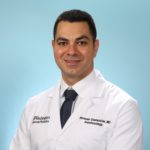
Alexander Chamessian, Washington University School of Medicine in St. Louis
Assistant Professor, Anesthesiology
B.Sc., Stony Brook University
M.D., Ph.D., Duke University School of Medicine
Chronic pain affects more than 50 million Americans, and current treatments often rely on opioids, which can be addictive and ineffective for many people. The Chamessian Lab is exploring a promising new way to relieve pain using an emerging therapeutic modality called targeted protein degradation (TPD), which eliminates protein targets rather than just blocking them. This project will apply TPD to the voltage-gated sodium channels NaV1.7 and NaV1.8, both of which are key mediators of pain in humans. The proposed work builds on foundational in vitro results from the Chamessian Lab showing for the first time that NaV1.7/8 are amenable to TPD using small molecule effectors called PROTACs. Now, Alexander Chamessian and his team will 1) test the ability of PROTAC-mediated TPD of NaV1.7/8 to produce analgesia in vivo using preclinical animal models, and 2) develop new tools to more selectively direct TPD to pain-generating neurons (nociceptors). Taken together, this work is poised to deliver novel, non-addictive degrader analgesics to bring much needed relief to the millions of people suffering from chronic pain.
What will funding from the Rita Allen Foundation Award in Pain allow you to do?
Working on targeted protein degradation to develop new pain therapies is the most exciting and potentially high-impact research I’ve done in my career thus far. I feel a great sense of urgency and responsibility to do the work we’ve proposed. New ideas often seem risky in the beginning, and securing funding to test those ideas can be challenging, especially for early-career investigators. The Rita Allen Foundation Award in Pain is so important because it meets this need to support new and bold ideas. These generous funds will enable me and my team to pursue this uncharted line of work in a way that we could not do otherwise.
How did you enter this career path? Was there anyone or anything that particularly inspired you?
I made the commitment to becoming a pain physician-scientist more than 15 years ago. I was influenced early on by people in my family who struggled with chronic pain, especially my mom. When the time came to choose between a research-oriented or clinical career, I decided to do both and undertook dual M.D., Ph.D. training, knowing from the beginning that I wanted to direct my time and talents to understanding and treating pain. Now as a practicing pain medicine specialist, I am inspired and motivated by the patients I have the privilege of caring for. Every time I’m in the clinic, I hear the experiences of my patients and see the limitations of our current methods of treating pain, which gives me great urgency and energy to help improve the status quo.
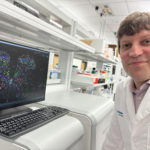
Allan-Hermann Pool, University of Texas Southwestern Medical Center
Assistant Professor, Neuroscience, Anesthesiology and Pain Management
B.Sc., Tallinn University of Technology
Ph.D., University of California, Berkeley
Animals have evolved the ability to discriminate between different types of tissue injuries and perceive them as distinct pain states. The Pool Lab seeks to understand cellular mechanisms through which the spinal cord translates tissue damage into central pain perception and orchestrates adaptive and maladaptive pain behaviors. To this end, the Pool Lab is studying the functional role of diverse spinal cord output neuron classes that link the spinal cord to the central brain and give rise to all pain perception below the neck. Furthermore, the lab aims to develop a new therapeutic avenue to selectively mute pain-conveying spinal cell types based on cellular features that differentiate them from the rest of the delicate spinal cord circuitry. Consequently, Allan-Hermann Pool and his team hope to identify new cellular and molecular targets for precision control of the perception of pain.
What will funding from the Rita Allen Foundation Award in Pain allow you to do?
The generous support from the Rita Allen Foundation will allow us to generate the necessary transgenic reagents to study the functional logic of pain coding in the mammalian spinal cord in acute and chronic pain states. Furthermore, the award provides an opportunity for us to design non-genetic agents for manipulating specific spinal neural classes and provide a much-needed, easy combinatorial avenue for perturbing spinal circuits that could serve as a basis for modular cell-type-targeted once-and-done pain therapies in the future.
How did you enter this career path? Was there anyone or anything that particularly inspired you?
The initial impetus to enter science came from high school exposure to molecular biology in Estonia which first inspired me to pursue a career in science. However, what has kept me in research is the chance to personally take a stab at understanding the mechanisms that provide a purpose to animal behavior (including our own). A book that catalyzed my trajectory in this direction was Albert Camus’ The Myth of Sisyphus, which underscored the essential lack of purpose to our existence. Although I still agree with the underlying premise, it is the biological imperative to survive and the basic biological drives that make our subjective experience of the world profoundly meaningful. Being able to study the biological substrate that brings this about is something that has made research highly enjoyable for me.
Could you share any interesting science media you currently enjoy, such as a book, podcast, film, or social media channel?
I have hugely enjoyed reading the History of Neuroscience in Autobiography series put together by the Society for Neuroscience. It gives a fascinating inside look into the science, controversies and people behind many remarkable discoveries in the field.
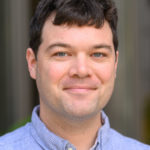
Alex Johnson, Brandeis University
Assistant Professor, Biochemistry
B.A., Reed College
Ph.D., Stanford University
All cellular life is defined by membranes. At the edge of the cell, the plasma membrane forms a barrier against external insults, and internally, organellar membranes compartmentalize crucial cellular processes. Proteins embedded within membranes allow for the regulated passage of biomolecules and communication within and between cells. As a result, membranes are a focal point of immune signaling pathways and a chief target of pathogens that seek to destroy cells. Alex Johnson discovered that an immune signaling mechanism used by human cells is billions of years older than expected and deployed by bacteria to defend against their major pathogens, bacteriophages. In cells, this mechanism relies on an incredible class of proteins that form gigantic pores in membranes, effectively “poking holes” that induce cell death and the secretion of immune signaling molecules. By studying bacterial homologs of these pore-forming proteins, Johnson’s work established a new frame of reference to understand how these proteins work and yielded unforeseen insights into their mechanism of regulation in human cells. The broad goal of his lab’s research program is to answer stubborn problems of immunology using a comparative evolutionary analysis. Currently, the lab of Microbes and Biochemistry at Brandeis University is focused on applying a pan-species analysis to reveal the full breadth of mechanisms used by pore-forming proteins and applying this knowledge to develop pore-forming proteins as a new therapeutic modality.
What will funding from the Rita Allen Foundation allow you to do?
The Rita Allen funding will allow my group to expand, take big risks, and venture into exciting new scientific territories.
How did you enter this career path? Was there anyone or anything that particularly inspired you?
My dad is not a scientist but was a huge inspiration by being an excellent cook and gardener. While growing up, he entertained several of my crazy ideas, including allowing me to set up a worm compost in my room and helping me build an outdoor solar greenhouse. These experiences instilled a drive for DIY experimentation which continues to this day in my lab.
Could you share any interesting science media you currently enjoy, such as a book, podcast, film, or social media channel?
One of my favorite science films is Science is Fiction by Jean Painlevé. It is about time for a rewatch, if for no other reason than the Duke Ellington soundtrack.
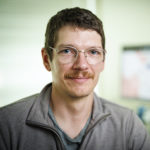
Christopher Lapointe, Fred Hutchinson Cancer Center
Assistant Professor, Basic Sciences Division
B.A., Colby College
Ph.D., University of Wisconsin-Madison
Cells contain tens of millions of protein molecules responsible for conducting the many functions required for life, including sending nerve signals, tightening muscles, fighting off viruses and more. These proteins are made by tiny molecular machines called ribosomes, which use the information stored in genes to build the proteins found in cells. At any given moment, millions of ribosomes must find the correct set of genetic instructions and start reading them at exactly the right spot. When this critical process goes awry, it can lead to many diseases, including cancer, developmental disorders, autoimmune diseases, and neurodegenerative conditions.
The Lapointe Lab uses cutting-edge technologies that capture ‘molecular movies’ of individual ribosomes at work, to see and understand how healthy cells control protein production and how this control breaks down in disease. These discoveries will help reveal potential new strategies for treating disorders connected to ribosomal dysfunction.
What will funding from the Rita Allen Foundation allow you to do?
Support from the Rita Allen Foundation will allow my lab to pursue our higher risk, higher reward ideas. We will explore how two proteins help the ribosome double-check its choice of a starting position before beginning protein production. In some cancers, these proteins malfunction, which may explain why protein production becomes uncontrolled. We are also investigating how other regulators act like “dials,” tuning protein production in specific tissues like the brain and immune system. To understand how they work and how they go awry in disease, our ultimate goal is to define atomic-level and millisecond-timescale molecular models—high-resolution molecular animations—of these processes.
How did you enter this career path? Was there anyone or anything that particularly inspired you?
I would not be here without the support of my scientific mentors. I was the first person in my immediate family to attend a four-year college and the first to move away permanently from the rural area where I grew up. Like many, I did not know that science research was a career option. My undergraduate research advisors allowed me to discover this passion, my Ph.D. advisor helped me grow as I learned the scientific process, and my postdoctoral advisor provided the support I needed to develop into an independent scientist. Likely stemming from my childhood, it turns out that I strongly connect with the puzzle-like aspects of unraveling how the biological nanomachines in our cells work. My goal now is to pay it forward and help the next generation of scientists in my group and communities achieve their goals.

Deepshika Ramanan, Salk Institute for Biological Studies
Assistant Professor, Molecular Biology
B.Sc., Winona State University
Ph.D., New York University
Maternal protection of offspring through milk is fundamental across mammals, yet the underlying immune mechanisms remain poorly understood. Breastmilk contains immune factors such as antibodies that not only defend against pathogens but also shape the infant’s gut immunity and influence lifelong health. However, what determines the immune composition of breastmilk and how it impacts infant intestinal immunity is still unclear. The Ramanan Lab studies the entero-mammary axis—the bidirectional communication between the gut and mammary gland—to understand how maternal immunity is transferred through milk. Using multi-omic approaches, the lab aims to uncover how immune cells and other signals from the gut influence maternal mammary gland and milk composition, and how these components protect the offspring from infections and autoimmune diseases.
What will funding from the Rita Allen Foundation allow you to do?
The role of immune cells in lactogenesis—the process of making milk—remains poorly understood, though emerging evidence suggests they support critical stages such as mammary gland remodeling and milk production. Funding from the Rita Allen Foundation will enable us to investigate the mechanisms by which maternal immune cells support lactation and promote immune health in offspring. We will focus on identifying specific immune cell populations involved in mammary tissue development, milk synthesis, and maternal immune regulation. While the benefits of breastfeeding for infant immunity are well known, there is increasing recognition of its positive impact on maternal health as well. By examining immune interactions within the mother-offspring dyad, this project aims to uncover how maternal immunity supports lactation and shapes long-term health outcomes for both mother and child.
How did you enter this career path? Was there anyone or anything that particularly inspired you?
I’ve been fascinated by biology since childhood, but growing up I didn’t have any role models in STEM, and the idea of becoming a female scientist felt far-fetched. Determined to pursue that passion, I moved to the United States to earn a bachelor’s degree in biology and eventually became the first in my family to earn a Ph.D. I owe much of my journey to several people who have guided me, from my college professors to my current mentors at Salk, and to the valuable opportunities they have provided along the way. My Ph.D. advisor, Ken Cadwell, took me on as his first student and played a central role in shaping my scientific thinking. My postdoctoral mentors, Diane Mathis and Christophe Benoist, continued that growth, challenging me to ask deeper questions and guiding me to become a more rigorous and independent scientist. In addition to helping me build a career in science, my mentors have inspired me to pay it forward to the next generation of scientists.
Could you share any interesting science media you currently enjoy, such as a book, podcast, film, or social media channel?
I enjoy listening to science podcasts, with Hidden Brain and Radiolab being my favorites.
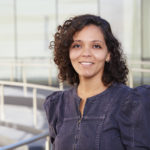
Lamia Wahba, The Rockefeller University
Assistant Professor, Genetics and Genomics
B.Sc., College of William and Mary
Ph.D., Johns Hopkins University
In the last months of 1944, towns in Western Netherlands plunged into the Hongerwinter, a six-month period of acute famine brought on by World War II. Nearly six decades later, a landmark study revealed that descendants of the Dutch survivors suffered adverse health effects two generations down. How did hunger impact their grandchildren’s lifespan?
External factors such as diet and stress have been linked to adverse consequences transmissible to offspring. This notion that environmentally-induced changes in an organism’s physiology can be passed on to offspring—once dismissed as heresy—has now gained widespread acceptance. However, critical questions on the prevalence and stability of such induced traits remain. Whether mechanisms driving these seemingly non-genetic changes could enable more rapid evolution in response to new environments than genetic alterations alone remains unclear. Addressing these questions drives research in the Wahba Lab, where Lamia Wahba and her team seek to answer a fundamental question facing biologists today: Do we need to radically rethink our views on inheritance to account for nongenetic mechanisms?
What will funding from the Rita Allen Foundation allow you to do?
Funding from the Rita Allen Foundation will allow us to develop new paradigms for studying the mechanisms of nongenetic inheritance and how they shape the evolution of organisms.
How did you enter this career path? Was there anyone or anything that particularly inspired
I have had the great fortune of being mentored by exceptional scientists and humans. Diane Shakes introduced me to scientific inquiry when I was an undergraduate at William and Mary. Doug Koshland taught me how to design class A experiments when I was a graduate student in his lab. And my postdoctoral mentor Andy Fire (1989 Rita Allen Foundation Scholar) taught me how to approach scientific questions in unique ways. I feel indebted to all of them for teaching me how to do science.